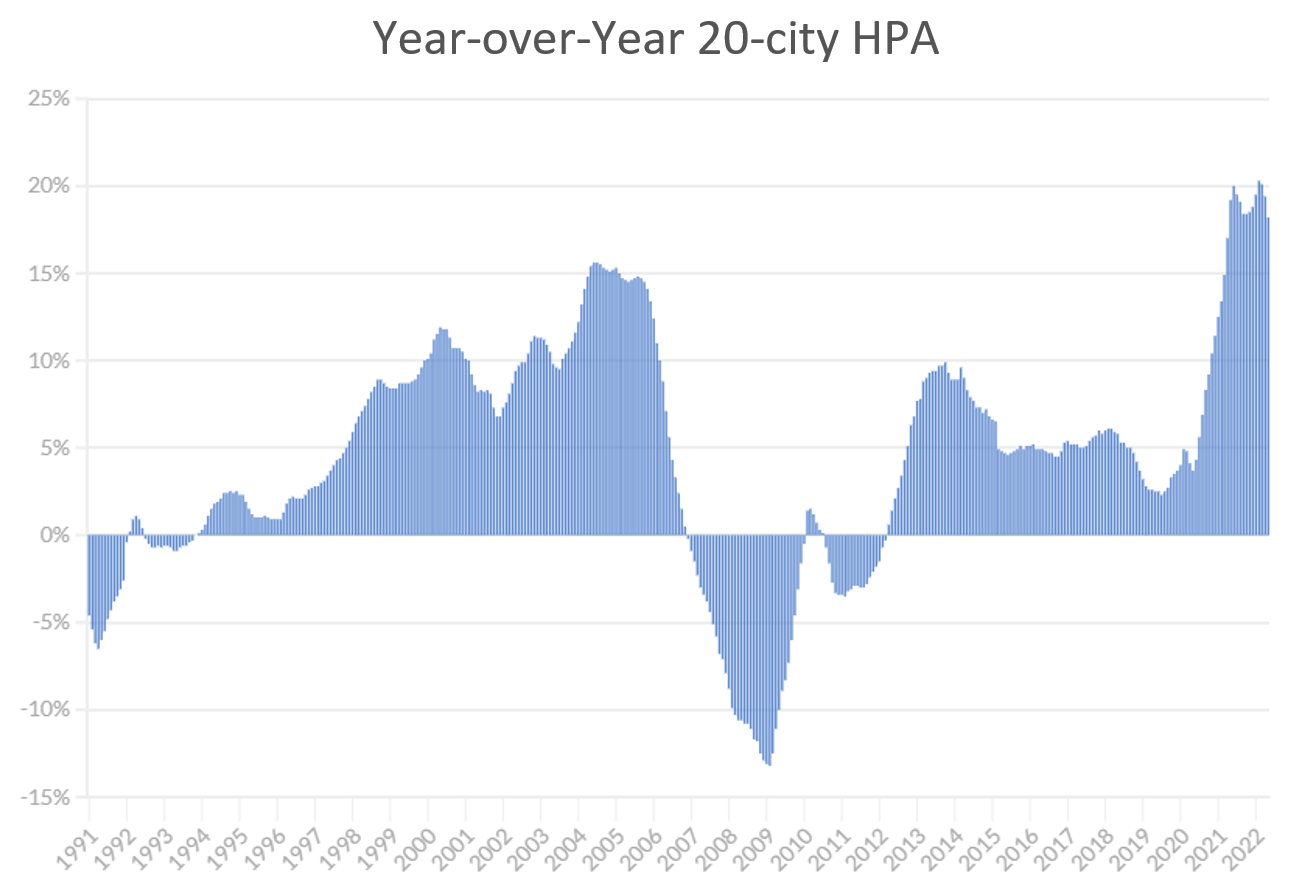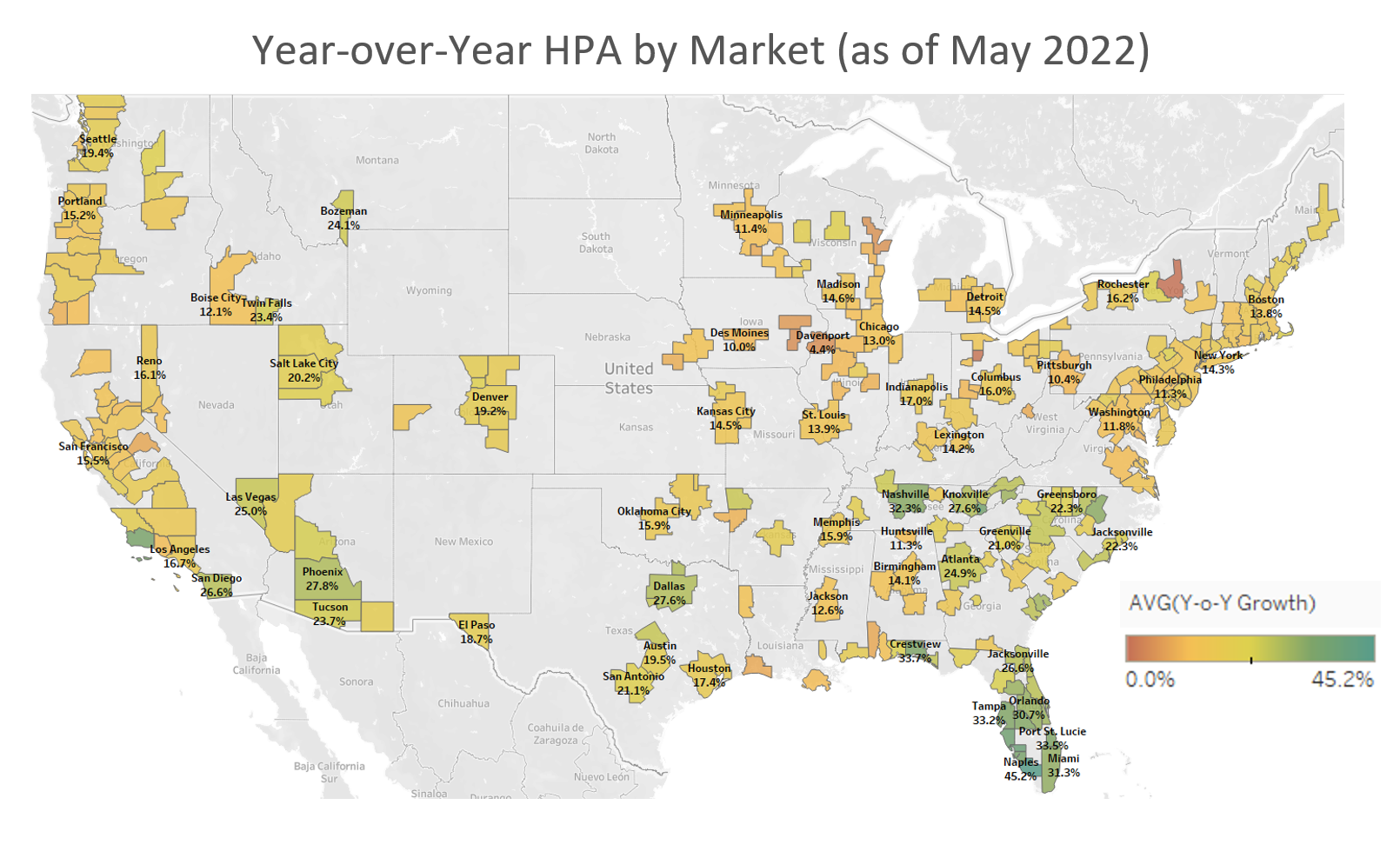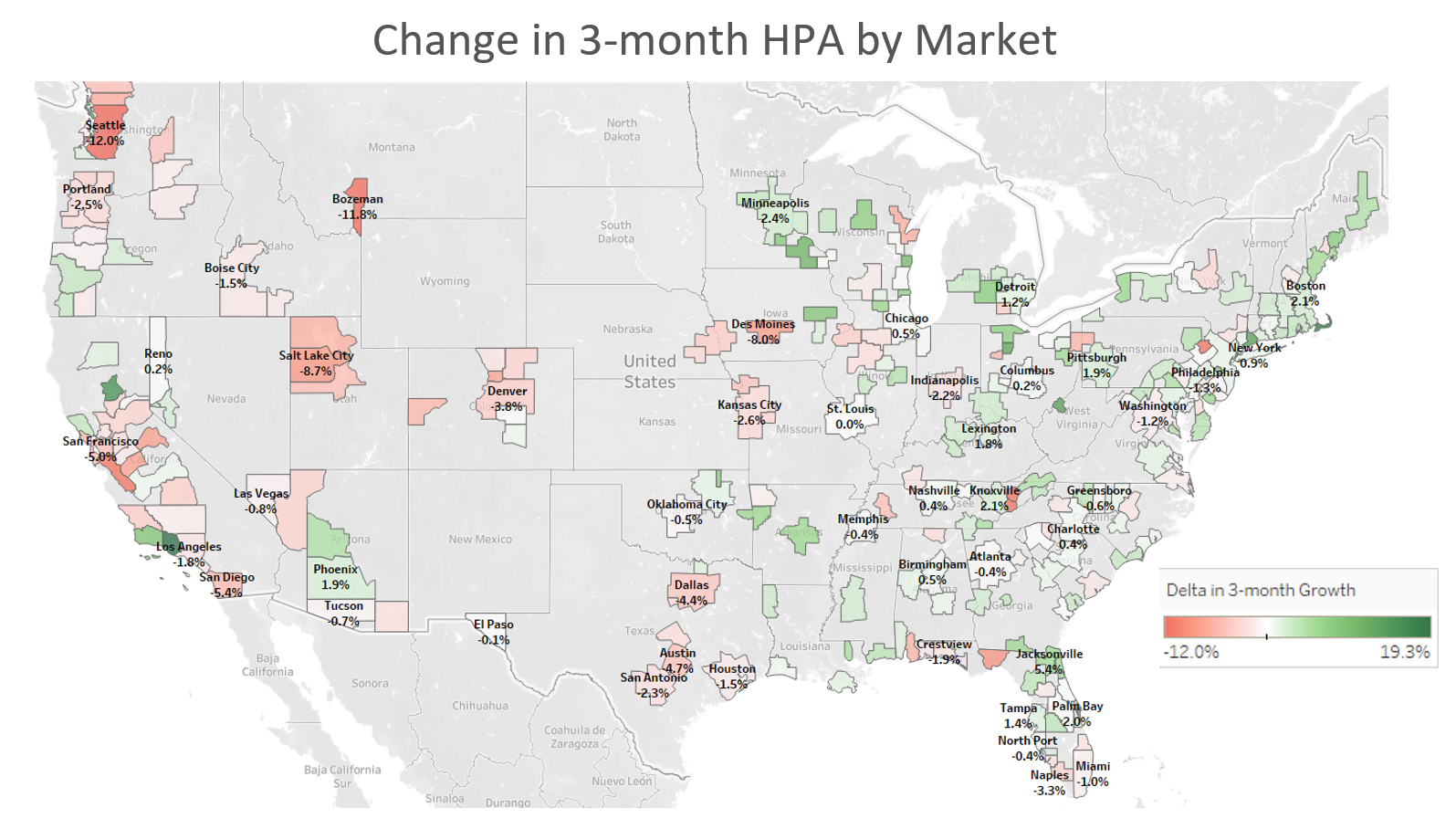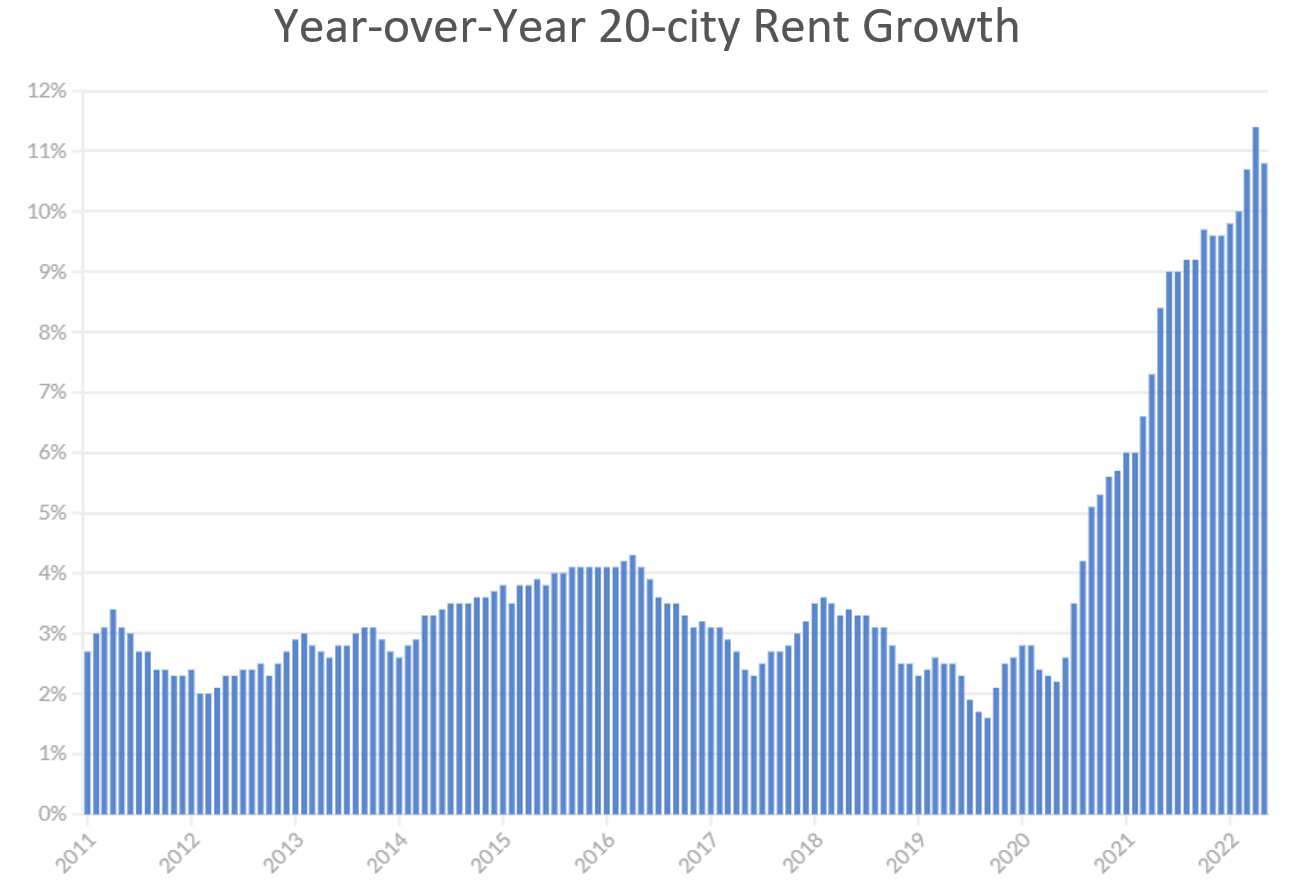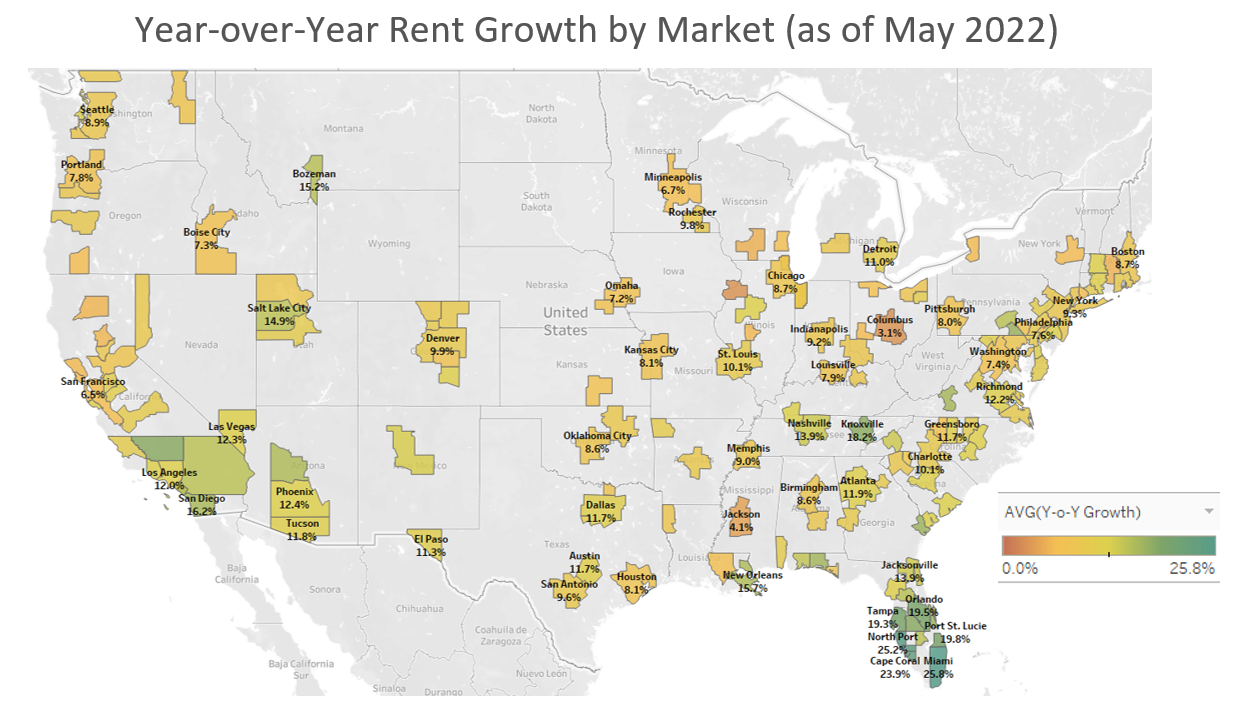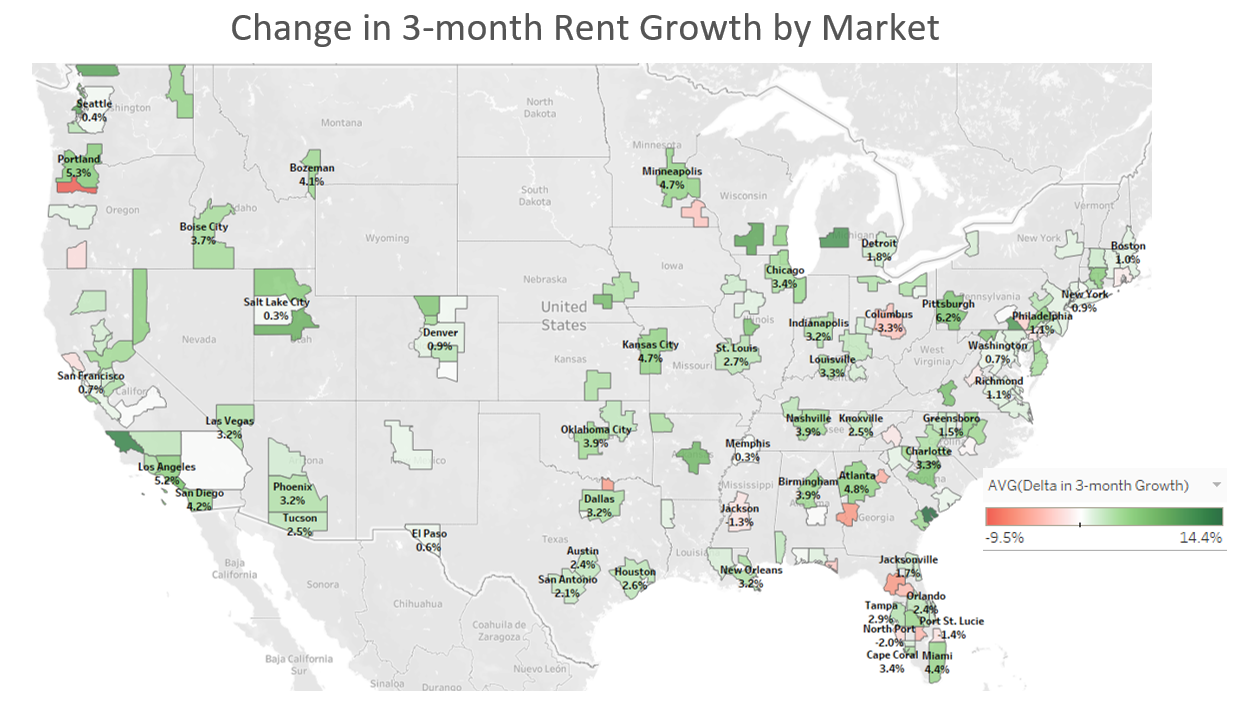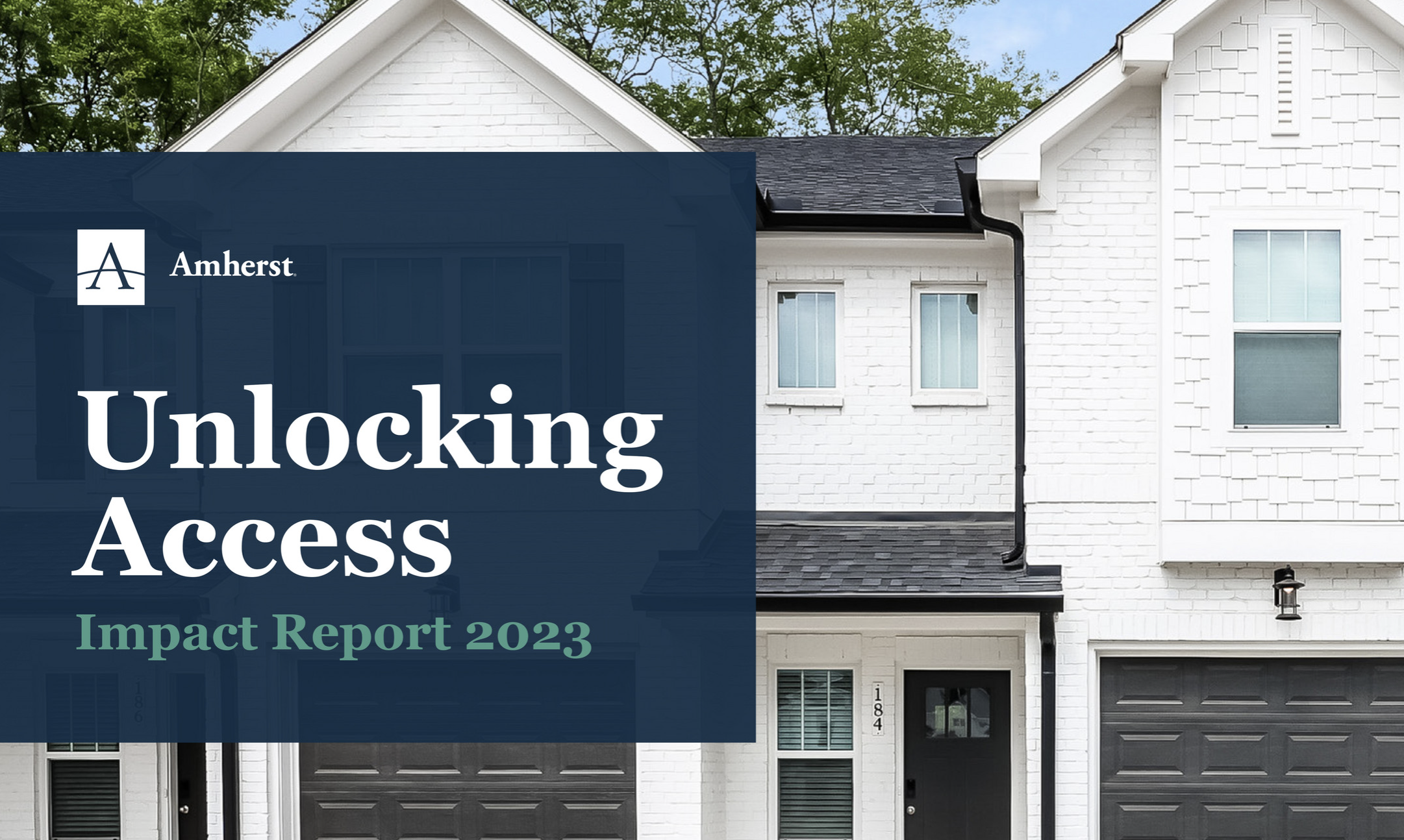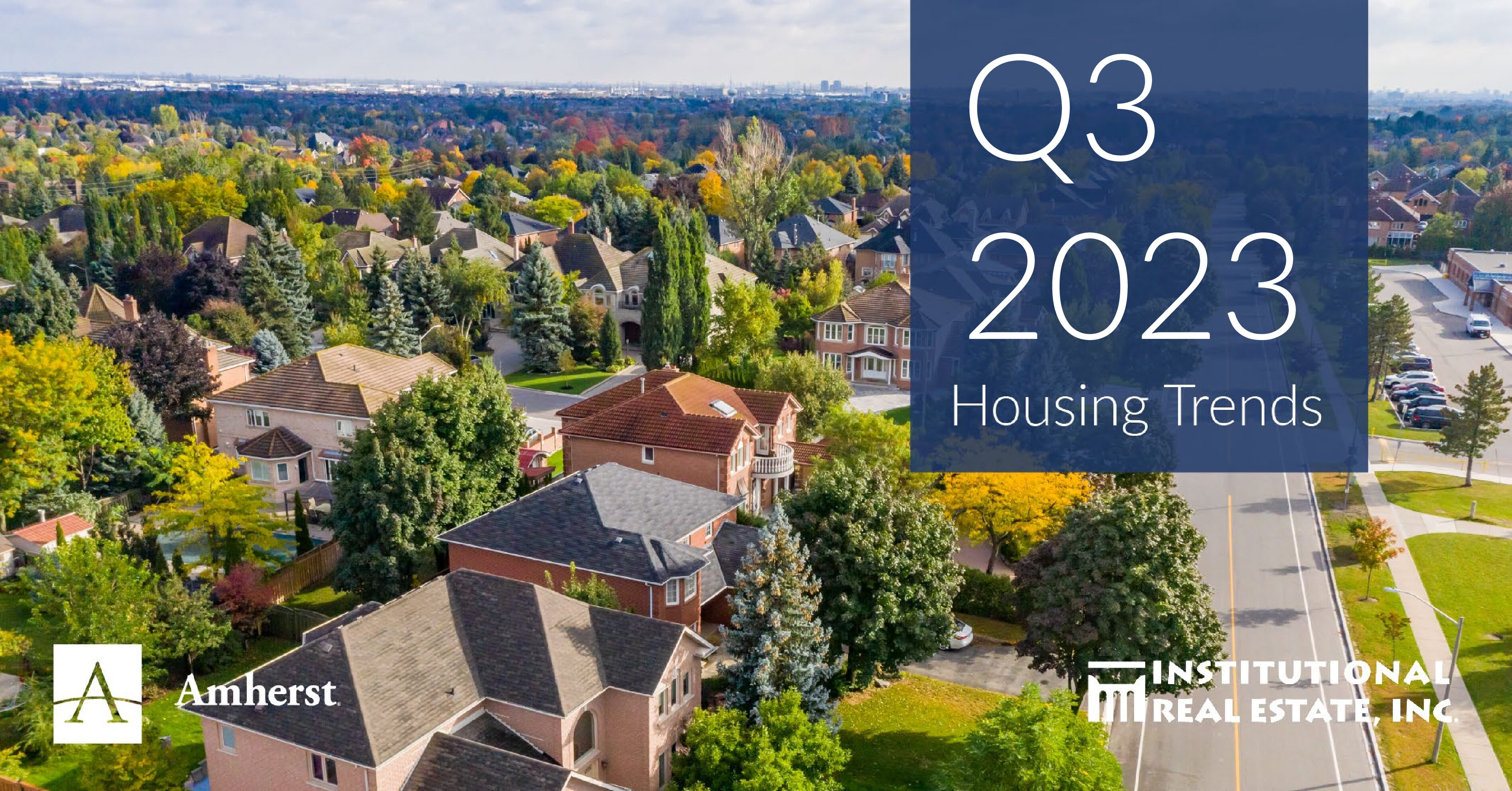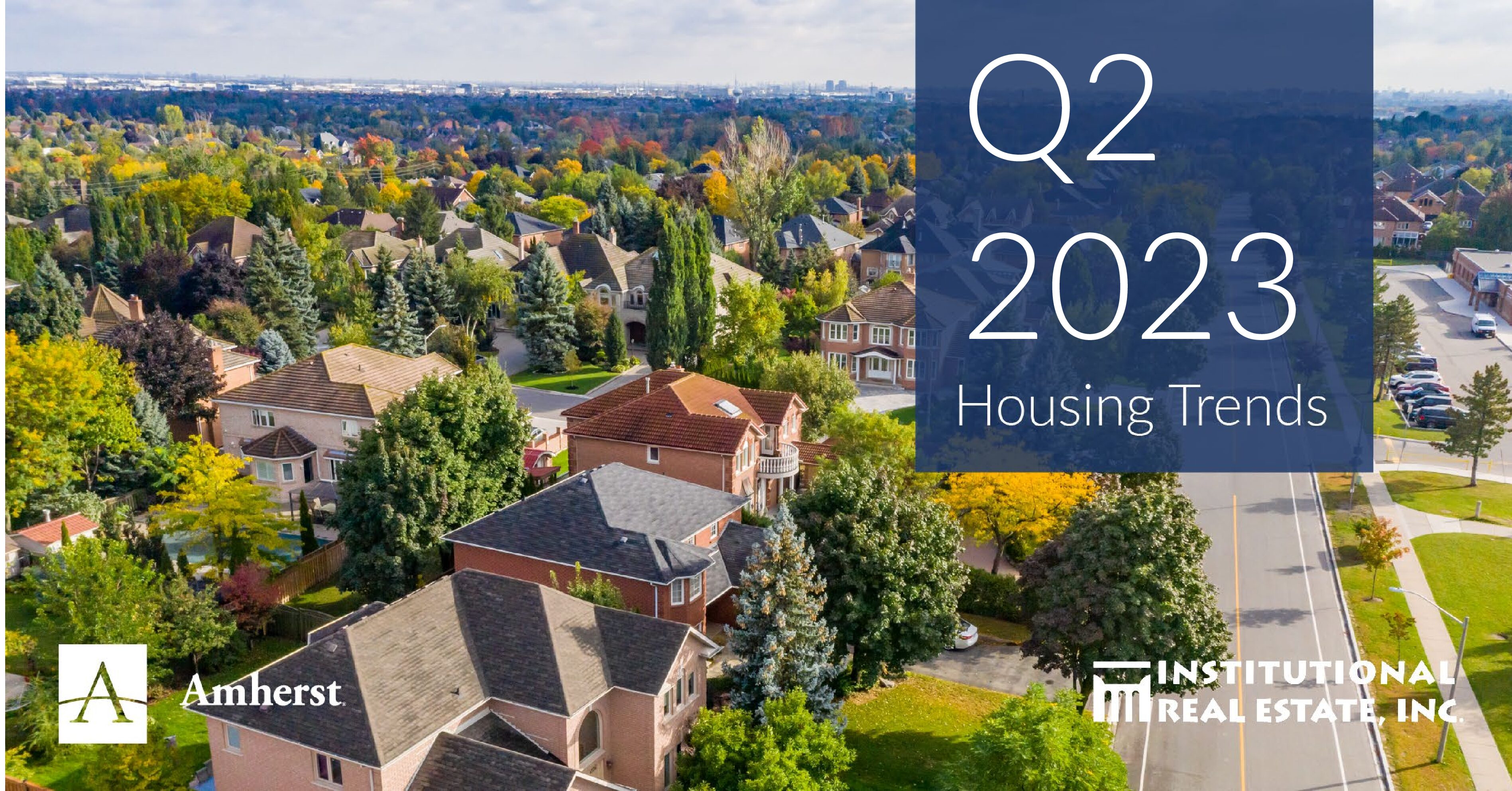As Interest Rates Jump and Homeownership Becomes Less Affordable, Home Price Appreciation Cools, While Rent Growth Remains Strong
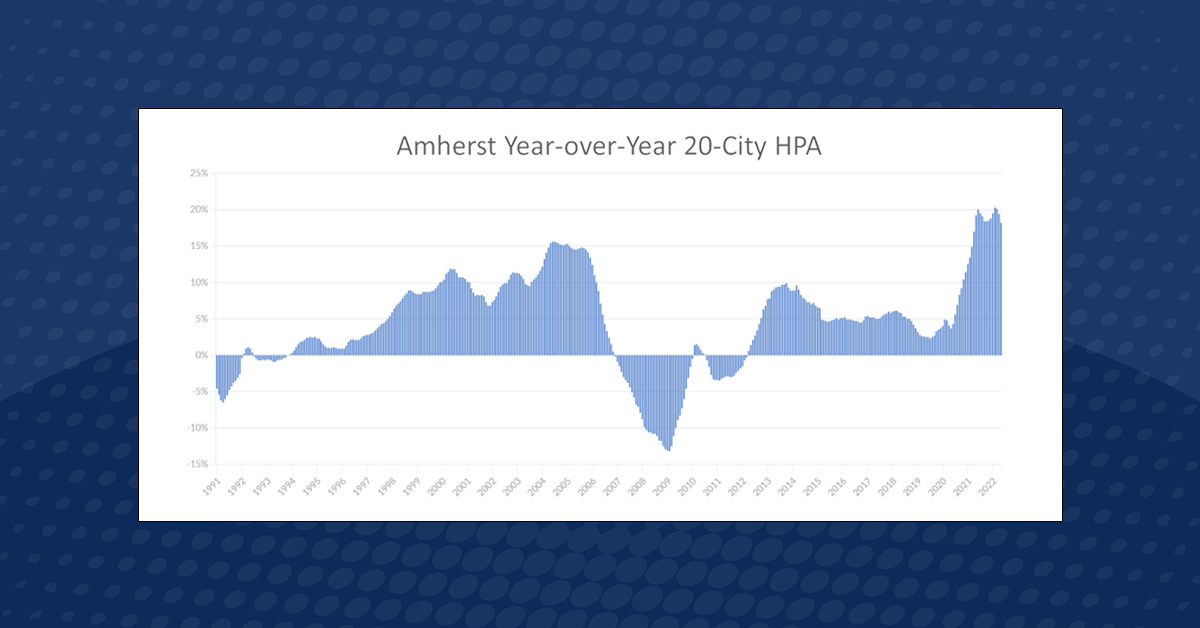
Despite starting the year with record highs and defying the drag of growing interest rates, the Amherst Home Price Appreciation Index (HPA) has finally slowed under the pressure of the highest 30-year fixed-rate mortgage rate since 2009. Year-over-year (YoY) home price growth for single-family homes was down by two percentage points (pp) from peak levels in February 2022 to 18.2% in May 2022.
The cooling in home price appreciation has long been foreshadowed. 30-day forecasts for May suggest velocity is down to 11.4%, consistent with the deceleration since February’s peak of 19.0%.1
As rising interest rates make homeownership less attainable for many households, leasing becomes a more desirable and affordable housing option in many markets. The 20-city Amherst Single-Family Rent Growth Index reflects strong demand for single-family homes with YoY rent growth hitting 10.8% in May, solidly in the range that has prevailed throughout 2022. Another key indicator of demand is leasing velocity. For-rent inventory grew by approximately 40% YoY as of May 2022, which pushed 30-days leasing velocities down to 50.5% compared to the record of 65% last year, meaning that more than half of single-family homes for lease rent within 30 days.
Amherst Home Price Appreciation Index
Home prices in Florida continue to grow at the most rapid rates, with 14 of the top 20 fastest- appreciating markets as of May 31. Those with highest YoY appreciation include Naples at 45.2%, Punta Gorda at 38.9%, and North Port at 37.1%. Home price growth in the remaining 11 Florida markets ranged from 27.6% to 35.7% YoY growth in May.
After Florida, Tennessee was the only state that posted three markets in the top 20, including Sevierville, Nashville, and Johnson City, which registered YoY growth of 35.7%, 32.3%, and 29.7%, respectively.
The remaining three markets have shown robust YoY growth since before the pandemic: Raleigh, NC; Phoenix, AZ; and Dallas, TX, with appreciation of 31.1%, 27.8%, and 27.6% respectively. The locations of these markets suggest consumers still show a distinct preference for decentralized suburban communities.
Amherst Rent Growth Index
As the increasing costs of financing make homeownership less affordable across the U.S., we expect to see high rent growth across more diversified markets, not just in markets like Florida that were recipients of pandemic-induced migration. Nonetheless, the top seven markets with the highest YoY rent growth were all in Florida, ranging from Miami with 25.8% to Tampa with 19.3%. The other five Florida markets have marked consistently strong growth over the last year, including North Port, Punta Gorda, Cape Coral, Port St. Lucie, and Orlando.
Three markets in California made it into the 20 fastest-growing markets and were all suburban cities geographically distanced from the traditionally fast-growing hubs of Los Angeles and the San Francisco Bay Area. Bakersfield, San Diego, and Anaheim registered YoY rent growth at 18.4%, 16.2%, and 15.6%, respectively.
The remaining markets are in Tennessee, Pennsylvania, Georgia, Arizona, and Montana with rent growth in the 15-18% range.
Conclusion
With the announcement of the 75bp interest rate spike by the Federal Reserve Bank on June 15th, it is all but inevitable that the housing markets will begin to cool more rapidly. The impact will be multi-faceted as the pandemic-era hot housing market settles closer to historical averages, and we expect to see significant decreases in home price growth and the possibility of newly built new homes remaining unsold unless large price cuts are introduced.
However, with homeownership becoming increasingly unattainable, we expect demand to lease single-family homes to remain strong for the foreseeable future, though that will be closely tied to continued wage growth.
1Amherst tabulation of MLS data, as of July 7, 2022.
Data Details
The Amherst Home Price Appreciation Index (HPA) tracks home price changes in the same 20 Metropolitan Statistical Areas (MSAs) that are used to construct the S&P CoreLogic Case-Shiller 20-City Index. Amherst also tracks market-level home-price changes to produce home price indexes for over 200 Core-Based Statistical Areas (CBSA) in the United States. The index is published on a monthly basis and is based on the Case Shiller repeat-sales methodology. Unlike the indices published by S&P CoreLogic Case-Shiller and the Federal Housing Finance Agency (FHFA), the Amherst HPA is a distressed-free index which does not include price changes due to foreclosures, short-sales, bank repossession, and REO resale. The use of Multiple Listing Services (MLS) data that are supplemented by CoreLogic off-market data allow the HPA to have a timelier look at monthly shifts in the housing market than some other leading market indices.2
The Amherst Rent Growth Index follows single-family detached homes rent price changes for the same MSAs that are used to construct the S&P CoreLogic Case-Shiller 20-City Index. Amherst also follows market-level statistics for over 150 CBSAs in the United States. The index is published every month and uses a repeat-rent methodology similar to the one employed for the Amherst HPA. The index incorporates both MLS and Altos rental data to produce a timely rent index.
Due to the early nature of our estimates, our indexes for prior months can change.
2At the time of writing this May 2022 housing market report, the S&P Case Shiller Index has been released up through April 2022.
Important Disclosures
The comments provided herein are a general market overview and do not constitute investment advice, are not predictive of any future market performance, are not provided as a sales or advertising communication, and do not represent an offer to sell or a solicitation of an offer to buy any security.
Similarly, this information is not intended to provide specific advice, recommendations or projected returns of any particular product of The Amherst Group LLC (“Amherst”) or its subsidiaries and affiliates.
These views are current as of the date of this communication and are subject to rapid change as economic and market conditions dictate. Though these views may be informed by information from sources that we believe to be accurate and reliable, we can make no representation as to the accuracy of such sources nor the completeness of such information. Past performance is no indication of future performance. Investments in mortgage related assets are speculative and involve special risks, and there can be no assurance that investment objectives will be realized or that suitable investments may be identified. Many factors affect performance including changes in market conditions and interest rates and in response to other economic, political, or financial developments. An investor could lose all or a substantial portion of his or her investment. No investment process is free of risk and there is no guarantee that the investment process described herein will be profitable. No investment strategy or risk management technique can guarantee returns or eliminate risk in any market environment.
Author: Gene Burinskiy | Vice President, Research & Data Journalism | The Amherst Group
Contributor: Thu Vo | Staff Financial Data Scientist | The Amherst Group


